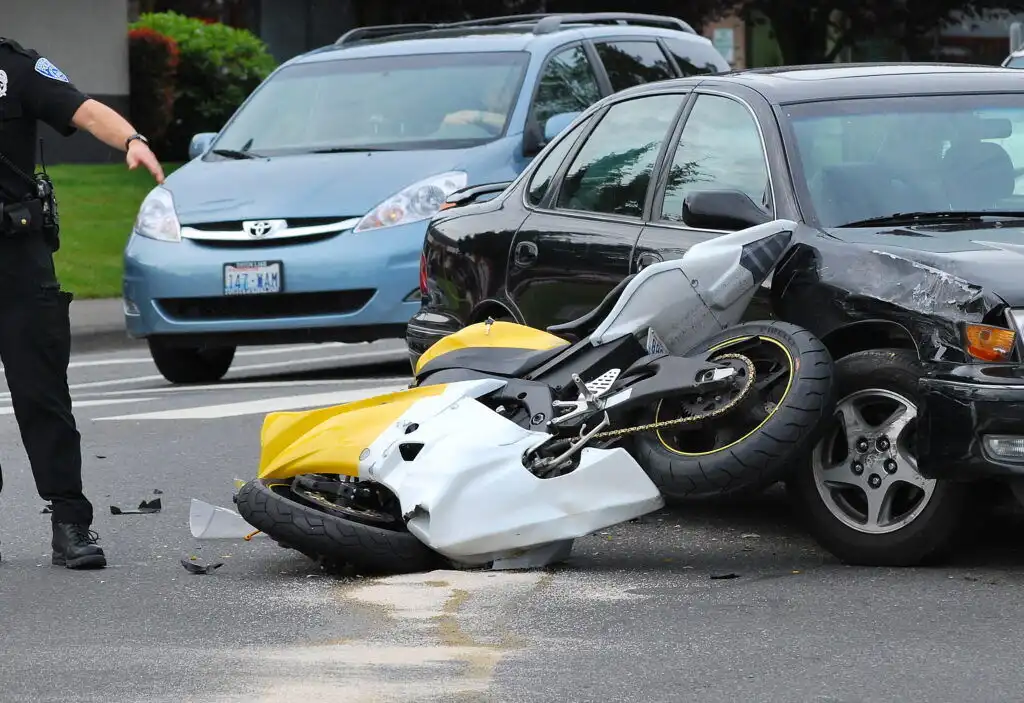Motorcycle accidents remain one of the most pressing safety concerns on the road, with motorcyclists being far more vulnerable to serious injury or death than drivers of other vehicles. While motorcycles make up only a small percentage of vehicles on the road, motorcyclists account for a disproportionate number of traffic fatalities. Understanding motorcycle accident statistics is critical for improving rider safety and reducing the number of accidents.
In this blog, we’ll delve into the most revealing statistics related to motorcycle accidents and what they tell us about rider safety. We’ll explore the primary factors contributing to accidents, how riders can protect themselves, and what changes need to happen to improve safety on the roads.
1. The High Rate of Motorcycle Accidents
Motorcycle accidents are far more likely to result in serious injury or death than car accidents. According to the National Highway Traffic Safety Administration (NHTSA), motorcyclists are 28 times more likely to die in a crash per mile traveled compared to passenger car occupants.
-
Key Statistic: In 2020, motorcyclists accounted for 14% of all traffic fatalities, despite motorcycles representing only 3% of all registered vehicles in the U.S.
-
What This Tells Us: This stark difference highlights the inherent risks of riding a motorcycle. While motorcycles provide freedom and excitement, they also lack the protective features of cars, such as airbags, seat belts, and reinforced metal frames. This makes riders more vulnerable in the event of an accident.
2. The Role of Speed in Motorcycle Accidents
Speeding is a leading factor in many motorcycle accidents. The faster a rider is traveling, the harder it is to react to hazards in time. Whether it’s another vehicle cutting into a rider’s lane, a pothole in the road, or a sudden stop, excessive speed drastically increases the likelihood of losing control.
-
Key Statistic: In 2020, nearly 30% of all motorcycle fatalities were speed-related, according to NHTSA.
-
What This Tells Us: Speeding is a major risk factor for motorcyclists. Even experienced riders can struggle to maintain control at high speeds, particularly in emergency situations. Lowering speeds, especially in areas with high traffic, curves, or wet conditions, is critical for reducing accident risk.
3. Alcohol Use and Its Impact on Rider Safety
Alcohol remains a significant contributor to motorcycle accidents, as it impairs a rider’s ability to judge distance, speed, and make quick decisions. In fact, alcohol consumption is one of the leading factors in fatal motorcycle crashes.
-
Key Statistic: In 2020, 25% of motorcyclists involved in fatal crashes had a blood alcohol concentration (BAC) of 0.08% or higher, the legal limit for intoxication.
-
What This Tells Us: Alcohol impairs judgment and slows reaction times, making it even more dangerous for motorcyclists. Unlike car drivers, who are shielded by the vehicle’s frame, motorcyclists have little protection in the event of an accident. When combined with alcohol, the likelihood of fatal injuries increases dramatically.
-
Prevention Tip: Riders should always avoid alcohol or drugs before and while riding. Designated drivers or alternative transportation options should be used if alcohol is involved.
4. The Importance of Wearing Helmets
Wearing a helmet significantly increases a rider’s chances of survival in the event of a crash. Helmets protect against traumatic head injuries, which are a leading cause of death in motorcycle accidents. In fact, states with universal helmet laws report lower fatality rates for motorcyclists than those without such laws.
-
Key Statistic: NHTSA reports that in 2020, 55% of motorcyclists who died in crashes were not wearing helmets.
-
What This Tells Us: The absence of a helmet drastically reduces the chances of survival. Helmets are proven to be the most effective piece of safety equipment for riders, preventing serious brain injuries and fatalities. It is critical that all riders wear helmets, regardless of state laws.
-
Prevention Tip: Ensure that you’re wearing a DOT-approved helmet that fits properly. Helmets should be replaced every few years or after any impact.
5. Time of Day and Motorcycle Accidents
The time of day plays a crucial role in motorcycle accidents, as visibility can be limited during certain hours, increasing the likelihood of collisions. Nighttime riding is particularly hazardous, as it is harder for both riders and other drivers to see each other.
-
Key Statistic: In 2020, nearly 40% of motorcycle fatalities occurred between the hours of 6:00 PM and 6:00 AM, when visibility is reduced.
-
What This Tells Us: The reduced visibility during the evening and nighttime hours significantly contributes to accidents. Riders are more difficult to see, especially when driving at higher speeds or in areas with low lighting.
-
Prevention Tip: Avoid riding at night whenever possible, especially in poorly lit areas. If riding at night is necessary, ensure that your bike’s headlights and taillights are functioning properly, and wear reflective or brightly colored gear to increase visibility.
6. Experience and Rider Training
Inexperience is a major factor in many motorcycle crashes. New riders are more likely to misjudge dangerous situations, make poor decisions, or lack the skill to avoid accidents. Riders who have received proper training are generally less prone to accidents than those who haven’t.
-
Key Statistic: According to the Motorcycle Safety Foundation, motorcyclists with less than one year of experience are more likely to crash than those with several years of riding experience.
-
What This Tells Us: Training and experience are essential for improving rider safety. Riders who have completed a motorcycle safety course and who practice regularly are better equipped to handle unexpected hazards and emergency situations.
-
Prevention Tip: If you’re a new rider, consider enrolling in a motorcycle safety course to learn essential riding skills, including how to handle emergency braking, cornering, and defensive riding techniques. Even experienced riders should continue to refresh their skills periodically.
7. Road Conditions and Motorcycle Accidents
Road hazards such as potholes, loose gravel, oil slicks, and uneven pavement are significant contributors to motorcycle accidents. Unlike cars, motorcycles are less stable and more sensitive to road conditions, making riders more prone to losing control when these hazards are encountered.
-
Key Statistic: In 2020, about 20% of motorcycle accidents occurred due to road defects, such as potholes or uneven surfaces.
-
What This Tells Us: Poor road conditions are a serious safety risk for motorcyclists. Riders should remain vigilant and look for signs of road hazards, especially in areas with a history of poor road maintenance.
-
Prevention Tip: Always scan the road ahead for potential hazards, and reduce your speed when riding on unfamiliar roads. When possible, avoid riding on poorly maintained roads or during inclement weather conditions that could worsen road conditions.
8. Vehicle Interactions and Motorcycle Accidents
Motorcycle accidents frequently occur when other drivers fail to see or yield to motorcyclists, particularly at intersections or when changing lanes. Cars and trucks have larger blind spots than motorcycles, and drivers may not be aware of a motorcyclist’s presence.
-
Key Statistic: According to the NHTSA, nearly 40% of motorcycle accidents involve another vehicle, often when the other driver is turning left or changing lanes.
-
What This Tells Us: Interaction with other vehicles is a leading cause of motorcycle accidents. Drivers may not be looking for motorcyclists, making it crucial for riders to remain alert and visible at all times.
-
Prevention Tip: Always stay visible by wearing bright clothing and using your motorcycle’s headlights during the day. Be cautious at intersections, and never assume that other drivers can see you. Make eye contact with drivers when possible to ensure they are aware of your presence.
Conclusion
Motorcycle accidents are a significant safety concern, but by understanding the key risk factors revealed in accident statistics, riders can take steps to protect themselves. Wearing helmets, avoiding alcohol, adhering to speed limits, gaining experience through training, and remaining vigilant on the road can all reduce the risk of an accident. Additionally, ongoing awareness of the risks associated with nighttime riding, road conditions, and interactions with other vehicles can help improve overall rider safety.
If you’ve been involved in a motorcycle accident, consulting with an experienced motorcycle accident lawyer can help ensure you receive the compensation you deserve for your injuries. Ride safely, stay informed, and continue to prioritize safety in all aspects of motorcycle riding.


